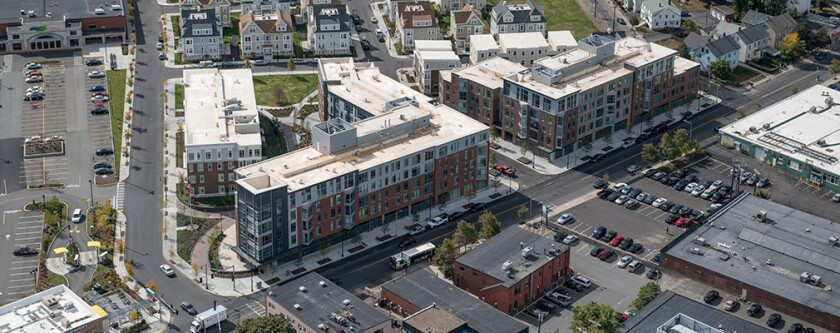It has sparked countless calls for reform from city and state officials, underpinned federal efforts to promote looser zoning rules, animated thousands of Twitter fights, and provided the foundation for the wide-ranging YIMBY movement. Naturally, a lot of people wonder how true it is. According to a new study from the Urban Institute, it’s true that zoning reform helps create more housing units, but there’s no evidence it makes housing cheaper.
The study, Land-Use Reforms and Housing Costs: Does Allowing for Increased Density Lead to Greater Affordability? is co-authored by a team of seven researchers. Its main finding is that zoning reforms, introduced over the last decade and a half, which loosen restrictions on development, are associated with a very small increase in housing supply, but not with a reduction in housing costs or with greater availability of lower-cost units.
The study takes a novel approach to the question of how zoning changes impact housing supply and costs. The researchers used “machine learning algorithms” to analyze newspaper reports about land-use changes in cities across the U.S.
They trained a computer program to tag news reports from 40 metropolitan areas with information about the reforms taking place: when they occurred, whether they increased or decreased restrictions, how much of the city they applied to, and what type of policies they involved. To achieve more reliable results, the researchers reduced the study area to eight metropolitan areas for closer inspection.
Eventually the team identified 180 reforms in 1,136 cities, dealing with things like accessory dwelling units, building height restrictions, lot sizes and allowable uses. Eighty-four of the reforms increased restrictions on development, while 96 reforms reduced restrictions. Further, they checked the reforms against U.S. Census data on rent and population levels and U.S. Postal Service data showing the total number of addresses in a given area. That provided a measure of how housing supply and housing costs changed after reforms were adopted.
The results showed reforms that loosened restrictions were associated with a 0.8 percent increase in housing units at least three years after the reform was implemented. Those same reforms were not associated with any significant effects on rent. On the other hand, policies that increased restrictions on housing development were associated with small increases in rent, according to the paper.
Like every major study on the effects of housing policy, the data have limitations, the researchers say. It isn’t possible to conduct a true experiment in which one part of a city gets a policy treatment and another does not, says Christopher Davis, a data scientist in the Metropolitan Housing and Communities Policy Center at the Urban Institute, because zoning isn’t the only factor determining how much housing gets built and how much rent costs.
“One of the difficult things about zoning reform in general is that zoning operates within a specific political and market context,” Davis says.
Still, Davis says, he had a hunch the study would show a greater effect of zoning reforms on housing supply. One factor in the seemingly small changes that result from zoning reforms is that the reforms themselves are often much more narrowly targeted than the debates around them would suggest.
Reports of the “end of single-family zoning” in cities and states around the country, for example, often mean that properties in low-density neighborhoods that were previously zoned for one unit are now permitted to have two or three. In many cases, there are additional factors that prevent homeowners or developers from retrofitting those neighborhoods for multifamily living at any meaningful scale.
“One of the ironies of this debate in general has been that the volume of discourse on this subject is much higher than the actual outcomes in either direction,” says Yonah Freemark, research director of the Land Use Lab at the institute. “It’s one of those situations where you wish the results were more cut and dry — massive changes and big improvements in quality of life.”
Although the study won’t settle the debate about how zoning reforms affect housing affordability, it does add to a growing body of research that suggests zoning reforms can play a small but meaningful role in increasing housing supply, says Freemark.
He recently published a separate study looking at a broad range of research on zoning policy. The effects of upzoning may just be much smaller than many advocates hope — at least from the scale of changes that American cities have adopted so far.
“I think that this [study] and the broader data that we’re assembling from a variety of studies pretty clearly demonstrates that if you want to increase housing affordability, upzoning can be one tool, but it’s not a miracle solution,” Freemark says. “There are many other things we need to engage with. And I hope policymakers are thinking seriously about expanding investment in affordable housing, which I think is fundamental to achieving that outcomes that people desire.”













